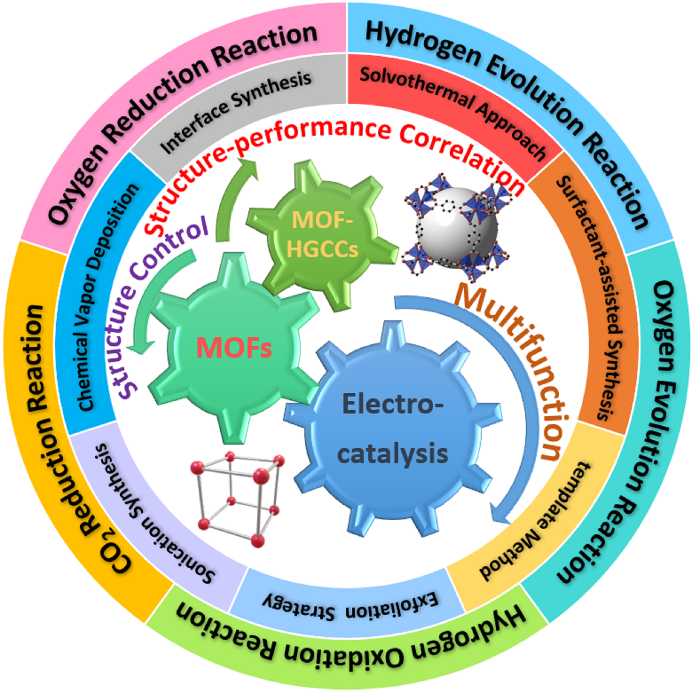
hotline:
17715390137
Tel/Wechat:
18101240246 (Technology)
0512-68565571
Email:mxenes@163.com (Sales Engineer)bkxc.bonnie@gmail.com
Scan the code to follow or search the official account on WeChat:
2D Materials Fronrier After paying attention,
click on the lower right corner to contact us,
Enter enterprise WeChat.
Professional Services Online

Electrocatalysis is the core of many important chemical conversion processes and clean energy technologies, such as fuel cells, water electrolytes and artificial CO2/N2 immobilization. Although precious metals have high activity in electrocatalysis, their practical applications are greatly limited by their scarcity and high price. As substitutes, various metal oxides / sulfides / phosphides have been gradually developed to reduce costs and improve catalytic efficiency.Precious metal / transition metal oxides are widely used as electrocatalysts, but they have inherent disadvantages, including low atomic utilization, small specific surface area and poor structure / component tunability. The catalytic activity of most of the metal-based materials rich in the earth is still unable to compete with that of precious metals.Therefore, there is an urgent need to develop a kind of easily available and cost-effective electrocatalysts. Metal-organic framework (MOFs), as a new type of material constructed by the coordination of transition metal nodes and organic connecting groups, has great potential to replace or supplement current precious metal-based and carbon-based catalysts because of its unique physical and chemical properties (including, but not limited to, well-defined structures, interconnected and regular pores, exposed metal active sites, precisely controlled components, and ultra-high specific surface area). It has received wide attention in recent years. Through simple and universal top-down or bottom-up synthesis strategies (ultrasonic synthesis, solvent / hydrothermal method, interfacial synthesis, surfactant-assisted synthesis, chemical vapor deposition, template method and stripping strategy, etc.), a large number of cheap and efficient MOF catalysts have been successfully developed and used in important energy conversion technologies.

Recently, Dr. Shanlong Zhao of the University of Sydney in Australia and researcher Tang Zhiyong of the National Nanoscience Center reviewed the research progress of metal-organic frame materials in the field of electrocatalysis in recent years on Small Science. The lead author is Yang Yongchao, a doctoral student at the University of Sydney (paper information is attached). The author first summarizes in detail the unique advantages of MOFs as an electrocatalyst and its latest design direction, and then comprehensively introduces and reviews the representative work of MOFs in electrocatalysis. It includes the latest progress of original MOFs and MOF host-guest composite catalysts (MOF-HGCCs) in oxygen reduction reaction (ORR), hydrogen oxidation reaction (HOR), hydrogen evolution reaction (HER), oxygen evolution reaction (OER), carbon dioxide reduction reaction (CO2RR). Then, the reaction mechanism, design principle and structure-activity relationship related to MOF materials are further summarized. Finally, the future opportunities and challenges in this emerging field are predicted and prospected.

Although great progress has been made, MOF electrocatalyst is still in its infancy. Low conductivity, poor contact efficiency (many metal sites in MOFs are poorly accessible because they are blocked by ligands / solvents) and poor stability (in harsh electrolytes, such as strong alkali / acid media) are becoming the main obstacles to the electrocatalysis of MOFs, which need to be overcome urgently. The target electrocatalysis function can be realized and the present situation can be changed by reasonably designing the shape, size, structure and composition of MOF materials. Compared with bulk 3D structure or micron particles, low-dimensional MOFs such as ultra-thin nanowires or nanowires can improve the contact efficiency because of their good film-forming properties and anisotropy. The catalytic stability of MOFs can be optimized by modifying the length of ligands and surface groups. The defect or coordination unsaturated engineering is expected to activate the internal metal sites of MOFs. The combination of original MOFs and foreign materials to construct MOF composites can improve the electrical conductivity and produce a strong interaction to optimize the electrocatalytic efficiency. In addition, there are no reports on the application of MOFs in other important industrial processes, such as chlorine precipitation reaction (the core reaction of alkaline chlorine process) and nitrogen reduction reaction (NRR), so it is necessary to expand the application of original MOFs. In order to characterize MOF catalysts clearly and comprehensively, HRTEM and in situ spectroscopy techniques (such as XPS, FTIR, Raman, isotope tracer and XAS analysis involving EXAFS and XANES) are usually used to identify its geometric and electronic structure, reveal its catalytic mechanism and explore synergism to further optimize the structure of the catalyst. In particular, XAS analysis has been widely used to determine the oxidation state, bond length, short-range disorder, coordination number and local geometry of metal centers. Computational simulation is also very important to understand the mechanism related to electrocatalytic activity and stability. With the novel knowledge gained from experiments and calculations, MOFs, can be functionalized at the molecular or atomic level to achieve its high activity, excellent selectivity and ultra-long-term stability in catalytic reactions. In a word, further in-depth research work is needed to develop the next generation of low-cost, high-performance original MOF electrocatalysts, or even MOF-based composites, to achieve the benchmark electrocatalytic performance in the practical application of renewable energy conversion and storage.
This information is from the Internet for academic exchange only. if there is any infringement, please contact us to delete it immediately.

| Reminder: Beijing Beike New Material Technology Co., Ltd. supplies products only for scientific research, not for humans |
| All rights reserved © 2019 beijing beike new material Technology Co., Ltd 京ICP备16054715-2号 |